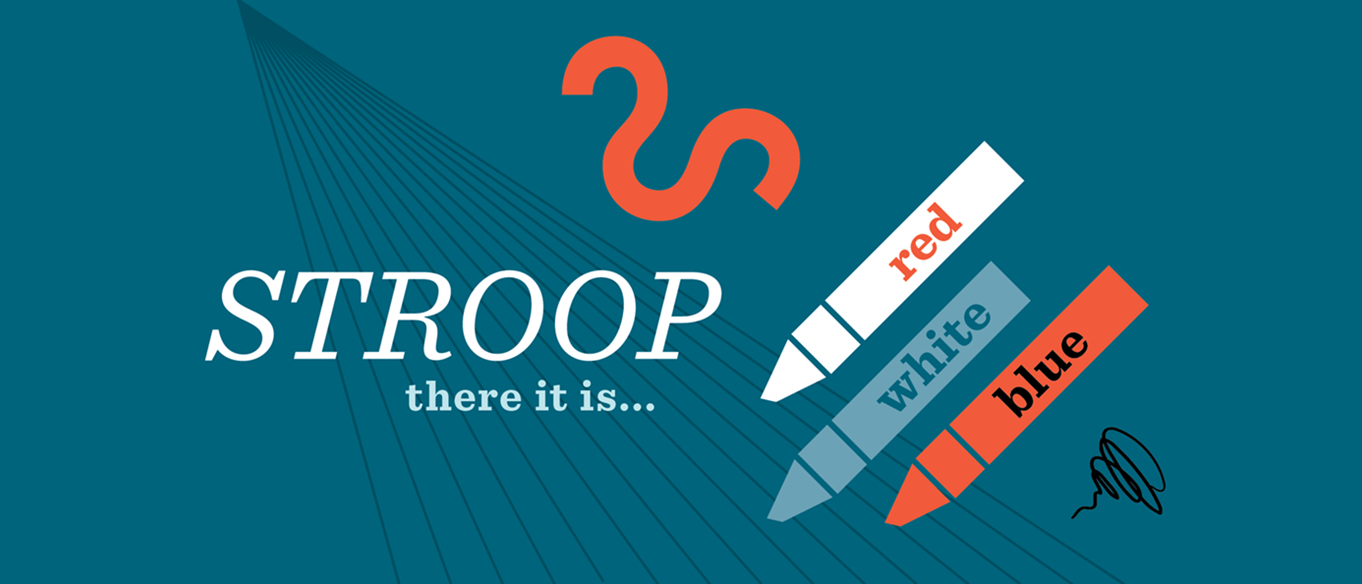
How hard is it to say color names? Possibly harder than you think! Try this fun experiment to explore how your brain processes words and colors, and what happens when it gets mixed signals.
Age: 7+
Time: 15 minutes
Keywords: Colors, brain, visual, word recognition
What you need:
- Piece of paper
- 6 different color markers or crayons
- Partner
- Timer or stopwatch
What to do:
1. On a piece of paper, write down the names of different colors, but write each one with a different color marker than the word. For example, if you are writing down the word “red” use a blue marker, and if you are writing down the word “green” use a yellow marker. Continue writing color words, alternating the colors randomly, until you have several rows of different color words (or at least 15 – 20 words).
Adaptation for diverse learners: You can do this on a screen, too. Open a blank document and type the words using different font colors than the word.
2. Ask a partner to use the timer or stopwatch to time you as you read the words on the page out loud, in order. How long did it take you? You might want to write down your time to compare to later.
3. Ask your partner to time you again, but this time, say out loud the color each word is written in, not what the word says. How long did it take you this time? Was it longer or shorter than the first time? Did anything surprise you about this round?
4. Now switch roles with your partner. Time them as they read the words, and then time them as they say the colors of the words. How do their times compare to yours?
5. Here are some questions to think and talk about with your partner:
- What did you notice about trying to say the color instead of the word?
- Did you make more mistakes reading the word or saying the color?
- Why do you think one of them took longer than the other?
6. Other ideas to try:
- Try this experiment with everyone in your household. Make a chart or graph of everyone’s times.
- Try this experiment with someone who does not know how to read. What do you notice?
- Try this experiment several times in a row, or every day for a week, and write down how long it takes you each time. How do your times change with practice?
- Make another copy of your word chart, but with all the color words written in their matching colors (so “red” is written in red, and so on). Is it easier to say the words when they’re written in the right color? How could you find out?
- Make new word charts using different types of words, such as non-color words (cat, house, elbow) or nonsense words (ziv, trelp, vrog). Does the type of word affect how fast you can say the word or the color?
- What other parts of this experiment could you change or test?
What’s happening?
The Stroop Effect is named after the scientist who first noticed it, J. Ridley Stroop. It shows what can happen when your brain gets competing instructions. Your brain receives lots of information all the time and has to sort out which is most important to pay attention to. When you learned to read, you discovered that what the word says is usually more important than what color it is. This trained your brain to pay attention to the word’s meaning first. When you try to say the word’s color instead (green), it is hard to ignore what the word actually says (“red”). It takes slightly longer to sort out the information and say the right name, and you’re more likely to make mistakes.

